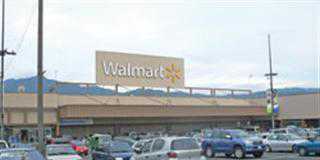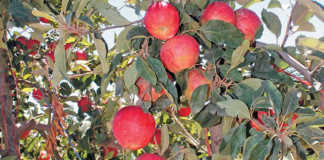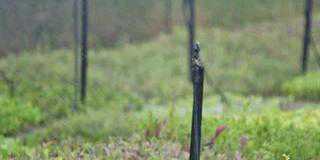
Photo: Lindi Botha
While farm life has always been in Hannes Richards’s vision, he never saw himself as a serious producer. But after his daughter won a piglet in a competition, he decided to invest in a small herd.
Before long, this grew too large to fit into his part-time schedule, so he had a few animals slaughtered and advertised the meat on Facebook. The avalanche of interest that followed catapulted him into full-time farming.
Back on the land
Richards was born on the farm Genoeg Gesukkel in Roossenekal, Limpopo, and spent most of his childhood there. But the drought in the mid-1980s forced his father to sell up, and the family moved to Pretoria, where Richards completed high school.
The longing for farm life, however, led the family to Hazyview, in the same province, where they farmed chickens and vegetables.
“But we were robbed blind and eventually decided to sell the farm,” recalls Richards. “At the same time, though, Genoeg Gesukkel came onto the market again, and I was able to buy it back!”
The farm is only 120ha in size, so Richards knew that he would never be able to farm full-time and make a decent income off this land. But he loved the tranquillity of living here, so he dabbled in one or two small enterprises to make a partial income off the land.
“Not long after I moved here, I loaned a sheep farmer friend some money. I told him he could pay me back in sheep, and so I acquired a few SA Mutton Merinos. I bought a ram at a local auction and started breeding the sheep.”
Pigs
Not long after introducing sheep to the farm, Richards attended a local harvest festival with his daughter. A competition allowed a nimble child a chance to catch a piglet and take him home. Richards’s daughter struck it lucky, and while pig farming was not part of his plan for the farm, he agreed to take the boar home.
“There would’ve been endless tears if we hadn’t. I built a camp for the boar and then added a sow so we could at least increase the herd to provide meat for the household.”
With a few lands lying fallow, Richards decided to plant maize and soya bean to supplement the mixed feed he bought from the co-op.
The herd of Large White and Landrace crossed pigs grew steadily and Richards sold the weaners on auction.
One day, he found himself with two pigs that needed to be culled, as using them would risk inbreeding. So he decided to try selling the meat directly from the farm, and asked his girlfriend, Andri van der Merwe, to put an advertisement on Facebook.
“The response was overwhelming. The word just spread and eventually we decided to buy in a few pigs from other farmers to slaughter and pack to meet the demand. From there, our business has just grown, which has necessitated an expansion of the pig herd.
“At this stage, we’re still buying in pigs for slaughter to keep up with demand, but this will hopefully change as our own herd grows.”
Richards started with five pigs in March this year, going up to 55, and down to 35 by June. Currently, a new litter is farrowed every three months, but he aims to reduce this to one week.
The pigs are slaughtered when they reach at least 60kg.
“The pig farming happened quite quickly,” he explains. “There are many systems that still need to be put in place and others that need improving as we expand. Pig farming can be an expensive undertaking if you want to do things correctly, such as erecting the right infrastructure to keep the animals comfortable.
“Because feed is one of our biggest costs, we need to produce our own maize, although I don’t have the land to expand my maize and soya bean production.”
Richards sends his pigs to an abattoir in Stoffberg. He and Van der Merwe then pack the meat at a local butchery, which has allowed them to use a workbench in the store. The meat is packed according to each order’s specifications, ranging from specific cuts to a cut-and-packaged half pig. They then deliver the meat to surrounding towns.
Sheep
As the sheep have been part of the farm from the beginning, Richards has also expanded this section to provide meat for home delivery. The flock has an average size of 100, with a lambing season once a year in July. A ratio of one ram for 40 ewes is maintained, with the rams permanently placed with the ewes.
“Once we’ve grown to the point where the flock is big enough to necessitate splitting it in two for better management, we’ll implement two lambing seasons,” says Richards.
The sheep feed on 85ha of mixed pasture comprising Kikuyu grass (Pennisetum clandestinum), blue buffalo grass (Cenchrus ciliaris) and Tambookie grass (Hyparrhenia filipendula), supplemented with milled maize in the summer. They feed on the soya bean and maize stover from May to September after the lands have been harvested.
The sheep are kept in a camp next to the house at night, as stock theft is a major problem.
When Richards started advertising the lamb meat, the strong demand led him to slaughter some of the older ewes that were producing weak lambs.
“The mutton is especially popular as it is far more affordable than lamb,” he explains.
“This gave me an opportunity to use strict selection criteria on my flock. Previously, I felt sorry for the sheep, so I kept giving them another chance when they didn’t produce good lambs. Now we have a good commercial flock, even though it has shrunk quite a bit, and I can rebuild it with better genetics.
“We’re not trying to become millionaires. We really enjoy what we’re doing, and although we have plans to expand, we’ll never be a massive enterprise. Growth means new challenges and new infrastructure, but the market is there, so we’ll grow as much as we can.
“We love the lifestyle that the business offers us. I believe this led us to seeing opportunities that others might have frowned upon or thought wasn’t worth the effort. Too many people are deterred from doing something because the profit margin isn’t high enough. We work for what we have. Even if we make R5, we’re happy because it’s R5 we would not have had otherwise.”
Richards says they have had to educate some customers, especially older people, on transacting securely via social media.
“They want to pay immediately after placing the order, but we prefer first-time customers to pay at delivery. There are so many scams out there; I’ve delivered to customers who’ve been scammed by people ‘selling’ farm-fresh meat. They make payment and the meat never arrives. Building trust in our customers is important.”
Van der Merwe says that although customers appreciate the good prices for the meat, it is the excellent quality that keeps them coming back for more.
“But marketing remains key. I never realised how big a role social media plays and how quickly word spreads. Just about every town has its own Facebook group, and if we haven’t already joined, people ask us to join. The groups for consumers wanting to buy directly from farmers have grown in leaps and bounds during the past few months, and this bodes well for our business in future.”
Email Hannes Richards at [email protected].










